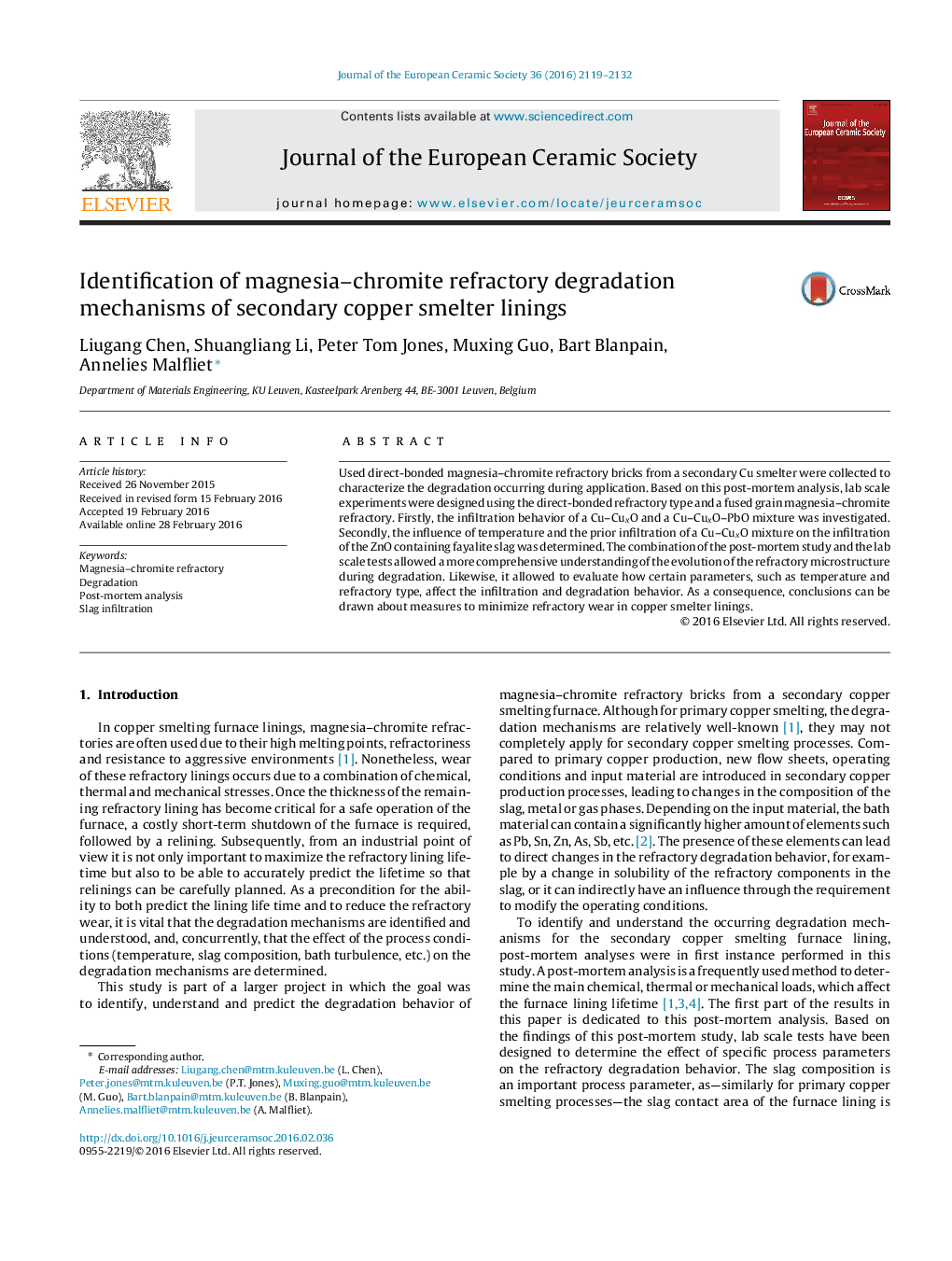| Article ID | Journal | Published Year | Pages | File Type |
|---|---|---|---|---|
| 1473639 | Journal of the European Ceramic Society | 2016 | 14 Pages |
Used direct-bonded magnesia–chromite refractory bricks from a secondary Cu smelter were collected to characterize the degradation occurring during application. Based on this post-mortem analysis, lab scale experiments were designed using the direct-bonded refractory type and a fused grain magnesia–chromite refractory. Firstly, the infiltration behavior of a Cu–CuxO and a Cu–CuxO–PbO mixture was investigated. Secondly, the influence of temperature and the prior infiltration of a Cu–CuxO mixture on the infiltration of the ZnO containing fayalite slag was determined. The combination of the post-mortem study and the lab scale tests allowed a more comprehensive understanding of the evolution of the refractory microstructure during degradation. Likewise, it allowed to evaluate how certain parameters, such as temperature and refractory type, affect the infiltration and degradation behavior. As a consequence, conclusions can be drawn about measures to minimize refractory wear in copper smelter linings.
